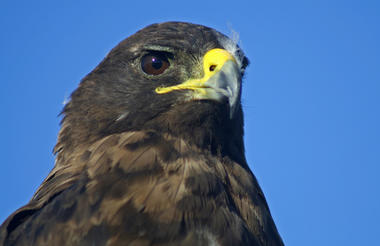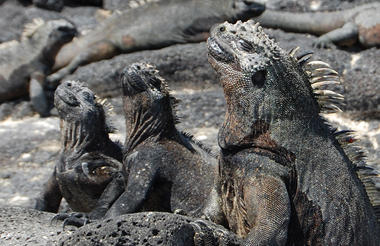You will depart for the Galapagos Islands and arrive at Baltra Airport, where your National Park naturalist guide will be waiting for you.
Whether you start your tour from Baltra or Puerto Ayora, you’ll take a bus to the highlands. Along the way, you’ll stop at a reserve to explore the lush highland forests, where you can look for the famous Galapagos Giant tortoises in their natural habitat.
You will visit a lava tunnel (depend on the itinerary) and learn how these extraordinary formations where created by ancient volcanic eruptions.



Lunch
Dinner
At Moreno Point, you’ll spot vast lava fields that may seem barren at first, but once you head inland, you’ll find brackish lagoons full of life—flamingos, gallinules, ducks, and herons. Along the shore, keep an eye out for penguins, marine iguanas, flightless cormorants, blue-footed boobies, sea lions, oystercatchers, and other shorebirds.
In Elizabeth Bay, you’ll explore a sheltered bay surrounded by mangroves and lava fields by dinghy, navigating through channels, pools, and coves packed with wildlife. It’s one of the best places to see Galapagos penguins, though the population is small, with only about 3,000 across the islands. You’ll also spot flightless cormorants, blue-footed boobies, pelicans, rays, and sea turtles in the rich, shallow waters.



Breakfast
Lunch
Dinner
In the morning, you’ll explore Urbina Bay, where an earthquake in the 1950s lifted the sea floor, leaving seashells and coral behind. Walk the trail to spot land iguanas, Galapagos hawks, and maybe giant tortoises if it's the right season.
In the afternoon, visit Tagus Cove, where Charles Darwin once walked. Hike through dry forests filled with finches and mockingbirds, and enjoy views of Darwin Lake and nearby volcanoes.
Take a boat ride along the coast to see penguins, marine iguanas, flightless cormorants, and the rare Galapagos martin.



Breakfast
Lunch
Dinner
At Espinoza Point, located at the base of the Galapagos’ most active volcano, you’ll be surrounded by the largest colony of marine iguanas. Sea lions bask on the beaches, while their playful pups splash in the tide pools.
Along the shore, look for flightless cormorants, which are found only in the western islands. The cold, plankton-rich waters support a variety of species, including herons, pelicans, oystercatchers, sea turtles, and shorebirds. Keep an eye on the mangroves—Galapagos hawks often perch there, watching for prey.
Albemarle Point offers both wildlife and history. During WWII, the U.S. built a radar base here to detect approaching Japanese warships, and you can still see remnants of it. The area is surrounded by lava fields, but along the coast, you’ll find some of the largest marine iguanas in the archipelago, along with Galapagos penguins, flightless cormorants, and shorebirds.



Breakfast
Lunch
Dinner
At Egas Port, you'll find remnants of past attempts to colonize the island. The coastal trail is rich in wildlife, with marine iguanas sunbathing, sea lions, herons, oystercatchers, and shorebirds. At the trail’s end, you'll reach "the grottos," home to a small colony of the endemic Galapagos fur seal—more elusive than its cousin, the sea lion. Since 2019, land iguanas have been reintroduced here, so keep an eye out for these impressive reptiles, which had been extinct on Santiago for over a century.
You’ll head to Espumilla Beach, where you can see a beautiful 1 km stretch of rusty-brown sand, surrounded by mangroves and native dry forest. Look out for Galapagos hawks, finches, mockingbirds, and doves. If you visit during the rainy season, the salt pan may host flamingos and ducks.



Breakfast
Lunch
Dinner
On the northern coast of Santa Cruz, you’ll visit Dragon Hill, home to the island’s only population of land iguanas. Thanks to a successful breeding program, these reptiles, once near extinction, have made a strong comeback. You can also spot flamingos, ducks, stilts, sandpipers, and other shorebirds at the small saltwater lagoon.



Breakfast







